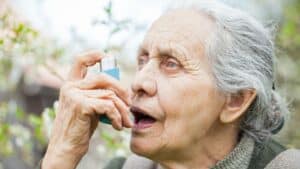Millions of people quit smoking every year, and lung health after smoking cessation has become a prominent theme among healthcare professionals.
About 47 percent of smokers attempt to quit annually. This is not surprising given that the number one cause of preventable death in the worldwide is smoking.
Over 400,000 people die every year from smoking, and an additional 50,000 people die from secondhand smoke as well. A lifetime of smoking can also lead to a variety of lung diseases like chronic obstructive pulmonary disease and interstitial lung disease.
Unfortunately, smoking cessation is the beginning of a long road, but the destination is a much healthier and happier place.
Lung Health after Smoking Cessation
The human body is constantly fighting for a state of equilibrium. That is why our body fights infection and heals itself when we are injured.
When smoke is introduced into the lungs, the body fights back. When smoke leaves the lungs, they start to heal immediately.
Although the response is quick, the progress is incremental when it comes to lung improvement:
- First day – Your blood pressure will drop along with your heart rate. Carbon monoxide levels will also drop to the body’s normal levels.
- First month – Your lungs will become more efficient in the ability to process oxygen, causing your circulation to improve.
- First 9 months – The cilia in your lungs start to function properly again reducing the risk of lung infection. Also, coughing and shortness of breath should vastly decrease.
- Ten years later – Your risk of lung, mouth, throat, bladder, kidney and pancreas cancer drop dramatically.
Permanent damage is caused by smoking, and though you benefit immediately from quitting, quitting does not completely erase the risk of developing a lung-related disease.
Improving Lung Health
Although your body’s ability to heal itself is a marvel, it needs some help in promoting lung health. There are multiple outlets to get help to your lungs. However, the easiest form of action is diet and exercise.
For example, a study published in Thorax showed that men who eat apples have better lung health than those who do not. In this regard, seeking the help of a dietitian and fitness trainer can be very helpful, but make sure to speak about any planned rehabilitation with you physician first.
Here are some exercises to help your lungs:
- Walking and biking – Exercises that will stimulate heart health will help the lungs utilize oxygen more efficiently, which means less shortness of breath and deeper breathing. Try speed walking and riding a bike for extended periods of time.
- Swimming – You use nearly every muscle in your body when you swim. Use caution, swimming can seem simple, but it can be strenuous. It’s important that people with lung damage ease into swimming.
- Yoga – Another activity that uses most of your body’s muscles, yoga can stimulate your lungs through focused breathing. Yoga also helps workout your diaphragm, the muscle that operates the lungs.
- Breathing exercises – There is a long list of breathing exercises you can perform to help improve lung capacity. Try breathing in deeply, and filing the lung cavity. When you exhale, purse your lips and breathe slowly. Then, try holding your breath for a few seconds before inhaling again. Repeat this exercise to see if you can increase the time you hold your breath.
The health benefits to smoking cessation are indisputable. Your lungs bounce back slowly, and with a little help from you, they can once again function properly. Sticking to a plan will yield greater benefits after you have quit smoking.

Christine Kingsley, APRN is the Health and Wellness Director at the Lung Institute where she focuses on providing helpful online resources for people looking for information on various lung diseases, breathing exercises, and healthy lifestyle choices. She advocates for holistic care that involves working with your doctor to explore all options including traditional and alternative care while focusing on diet and exercise as proactive measures.









